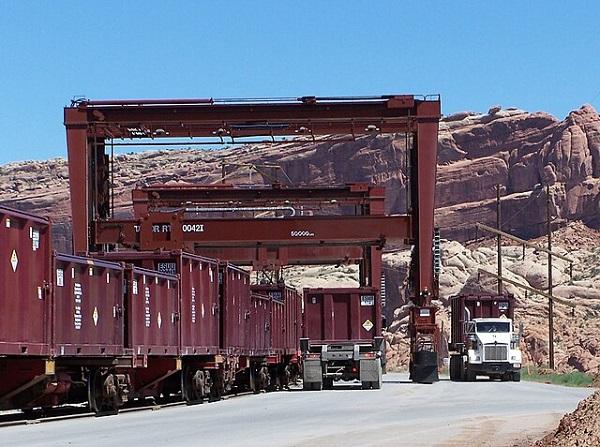Introduction
Gantry cranes are an integral part of many industrial operations, providing indispensable material handling capabilities. These large overhead cranes operate on fixed rails mounted to grounded legs, allowing them to lift and transport heavy loads across factories, warehouses, shipyards, and other facilities. With load capacities ranging from one ton to over a thousand tons, gantry cranes enable efficient movement of materials that would be impossible to handle manually.
However, inherent risks come with operating such massive and powerful equipment. A lack of safety practices can lead to catastrophic accidents, injuries, fatalities, and property damage. By understanding gantry crane types, components, safety regulations, and proper operating procedures, operators and facilities can ensure these cranes are utilized safely and productively.
Types of Gantry Cranes
There are several types of gantry cranes, each tailored to different applications and load requirements:
- Single Girder Gantry Cranes: As the name implies, these cranes have a single bridge girder and are lighter duty, ideal for general material handling and storage needs. They are more affordable but have a lower weight capacity, usually up to around 20 tons.
- Double Girder Gantry Cranes: With two overhead bridge girders instead of one, double girder cranes can handle much heavier loads, typically up to 150 tons or more. The dual girders provide strength and stability to lift massive weights.
- Adjustable Gantry Cranes: These cranes have adjustable legs, allowing the height and span to be adapted as needs change. They provide flexibility for varied tasks.
- Semi Gantry Cranes: Semi gantries utilize only one leg, with the other end attached to a building column. This saves space in tight areas.
- Stacker Gantry Cranes: Stackers are designed specifically for stacking and unstacking storage containers and moving loads in tight spaces.
Gantry Crane Components and Design
While gantry crane designs vary based on capacity and application, they share common components:
- Bridge: This overhead horizontal structure supports the trolley and materials being lifted. For heavy loads, box-type steel truss bridges are typically used.
- Trolley: The trolley runs along rails on the bridge, moving the lifting mechanism horizontally to position loads. Electric motors power the trolley movement.
- Hoist: The hoist is equipped with lifting gear like chain or wire rope to raise and lower loads vertically. Hoists are either fixed or moveable.
- Supporting Legs: The legs anchor the crane and bear the load weight. They may be fixed or adjustable, installed on wheels for portability.
- Operator Cab: This houses the crane controls and may be fixed on a leg or movable along with the trolley.
- Design factors like material strength, durability, and resistance to deflection, vibration, and fatigue must be balanced to create a safe, smooth-operating crane. Industry-specific needs like explosion protection or washdown capabilities may also require consideration.
Gantry Crane Safety Standards
To prevent gantry crane accidents, there are strict safety standards defined by OSHA and other regulating bodies:
- Operators must be formally trained and certified to use the specific gantry crane.
- Routine inspection and maintenance must adhere to manufacturer guidelines.
- Cranes must undergo fullload testing periodically.
- Safety devices are mandated, like limit switches, horns/lights, emergency stops.
- Loads cannot exceed rated capacity for the crane.
- Cranes must lower gently – no rapid or sudden movements.
- Operational rules like minimum distance between other objects must be followed.
Facilities may also implement internal policies for gantry crane operations and maintenance. Following all applicable safety standards is crucial.
Inspection and Maintenance
Preventing gantry crane failures requires vigilant inspection and servicing. Common practices include:
- Pre-operation inspections by the operator each day – checking fluid levels, wires, lights, horns, brakes.
- Monthly and annual inspections by maintenance personnel per the manufacturer’s schedule.
- Replacement or repair of any damaged or worn components based on monthly/annual inspections. This may include parts like hoist chains, control pads, gears, and tires.
- Regular lubrication of moving parts per manufacturer specifications.
- Testing crane functionality and safety devices to ensure proper operation.
- Verifying that all maintenance is documented properly.
Neglecting inspections and maintenance drastically increases the likelihood of crane failure and accidents. Facilities must dedicate personnel and resources to uphold maintenance programs.
Safe Gantry Crane Operation
Safe gantry crane operation hinges on various critical aspects, including operator expertise, proper equipment utilization, communication, and adherence to procedures and guidelines. Below are some of the key elements for safe operation:
- Operator Training and Certification:
- Operators must receive comprehensive training and obtain required certifications. This includes knowledge of the specific crane model, its components, limitations, and the ability to recognize potential hazards.
- Understanding Crane Capacity and Load Weight:
- Do Not Overload: Always be aware of the crane’s capacity and the weight of the load. Overloading can lead to mechanical failure or loss of control.
- Verify Load Weight: Using a load monitoring system can ensure the load does not exceed the crane’s rated capacity.
- Use of Proper Lifting Accessories:
- Selecting the right accessories like slings, spreaders, and straps that are suited for the specific load and properly maintained is vital.
- Clear Communication:
- Clear and concise communication with spotters, ground crew, and other team members is essential for coordinated efforts and avoiding misunderstandings.
- Obstruction and Hazard Monitoring:
- Watching for Obstructions: Always check the path for obstructions and plan movements accordingly.
- Utilize Technology: Sensors or cameras can be used to improve visibility around the load’s path.
- Controlled Movements:
- Slow and Steady Movements: Make movements deliberate and controlled to keep the load under command.
- Gradual Starting and Stopping: Begin and cease motions slowly to prevent load swing and maintain stability.
- Proper Parking and Non-Use Protocols:
- Park the crane appropriately when not in use, ensuring no suspended loads and engaging safety locks or brakes.
- Safety Near Other Workers or Equipment:
- Exercise caution near other workers, equipment, or sensitive areas to prevent collisions or other dangerous situations.
- Full Concentration and Professional Conduct:
- Avoid Distractions: Concentrate entirely on the operation and avoid engaging in unnecessary conversations or activities.
- Professional Behavior: Maintain a professional attitude and abstain from horseplay or any actions that might compromise safety.
- Adherence to Manufacturer’s Guidelines and Regulations:
- Follow the manufacturer’s instructions, local regulations, and international standards for safe operation. Regular audits and safety drills can reinforce these guidelines.
Proper procedures, hazard awareness, and focus are non-negotiable for avoiding catastrophic mistakes when operating gantry cranes. Emphasizing a culture of safety, continuous learning, and responsible conduct will build an environment where gantry cranes can be utilized efficiently and without risk. By integrating these aspects, facilities can create a robust framework that ensures the wellbeing of operators and the integrity of equipment. Collaboration between operators, maintenance teams, safety experts, and management is vital in fostering a safety-first approach in gantry crane operations.
Gantry Crane Safety Innovations
Advancing technologies have enabled new safety capabilities for gantry cranes, including:
- Remote monitoring systems to track crane operations, loads, and maintenance needs from a central office.
- Remote controlled cranes allow operators to situate themselves with optimal visibility.
- Obstruction warning systems use sensors to detect objects in the crane’s path and alert operators.
- Anti-collision systems prevent impact with obstacles using sensors and automatic braking.
- Automated shutdowns if the crane goes outside its programmed operating area.
- Load monitoring to prevent overloading.
- Location tracking to enforce keeping hazardous areas clear.
- Vision systems with sensors and cameras to improve hazard visibility.
As cranes increase in capabilities and complexity, so must safety mechanisms evolve in parallel. However, sophisticated safety technologies can never replace foundational requirements like rigorous maintenance, training, and proper operating procedures. By layering innovations atop a bedrock of safety fundamentals, gantry cranes can continue serving industry efficiently and productively with minimum risk.
Sources:
- IQS Directory: Gantry Crane: What Is It? How Is It Used? Types, Classes
- HSI: Overhead and Gantry Crane Safety
- Spanco: A Brief Guide to Crane Maintenance
- Mazzella Companies: What is a Gantry Crane? A Closer Look at the Different Types and Design
- EMC Insurance: Overhead and Gantry Crane Safety and Requirements
- AICRANE Lifting Equipment: Gantry Crane Operation
- EC&MW: The Importance of Maintaining Your Gantry Crane
- PWI: The 8 Types of Overhead Cranes
- Weekly Safety: Unique Safety Hazards of Overhead and Gantry Cranes
- OSHA: 1910.179 – Overhead and gantry cranes
- Konecranes: Overhead cranes: maintenance and purchasing basics
- Kinocranes: Types of Gantry Crane
- Mechanical Elements: Gantry Crane Safety – Practical Lifting
- Grainger: Overhead Crane Safety 29 CFR 1910.179










